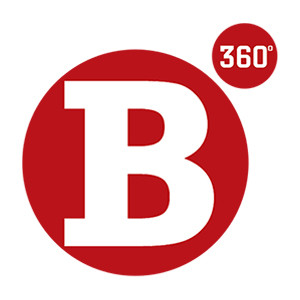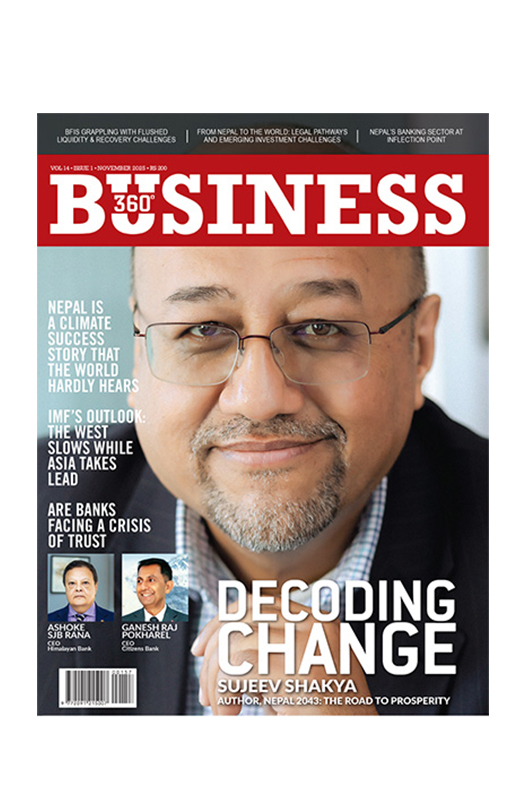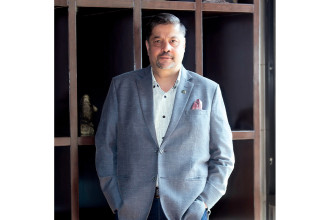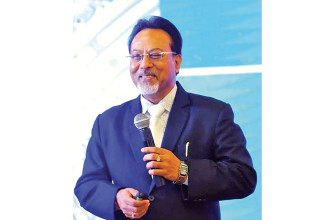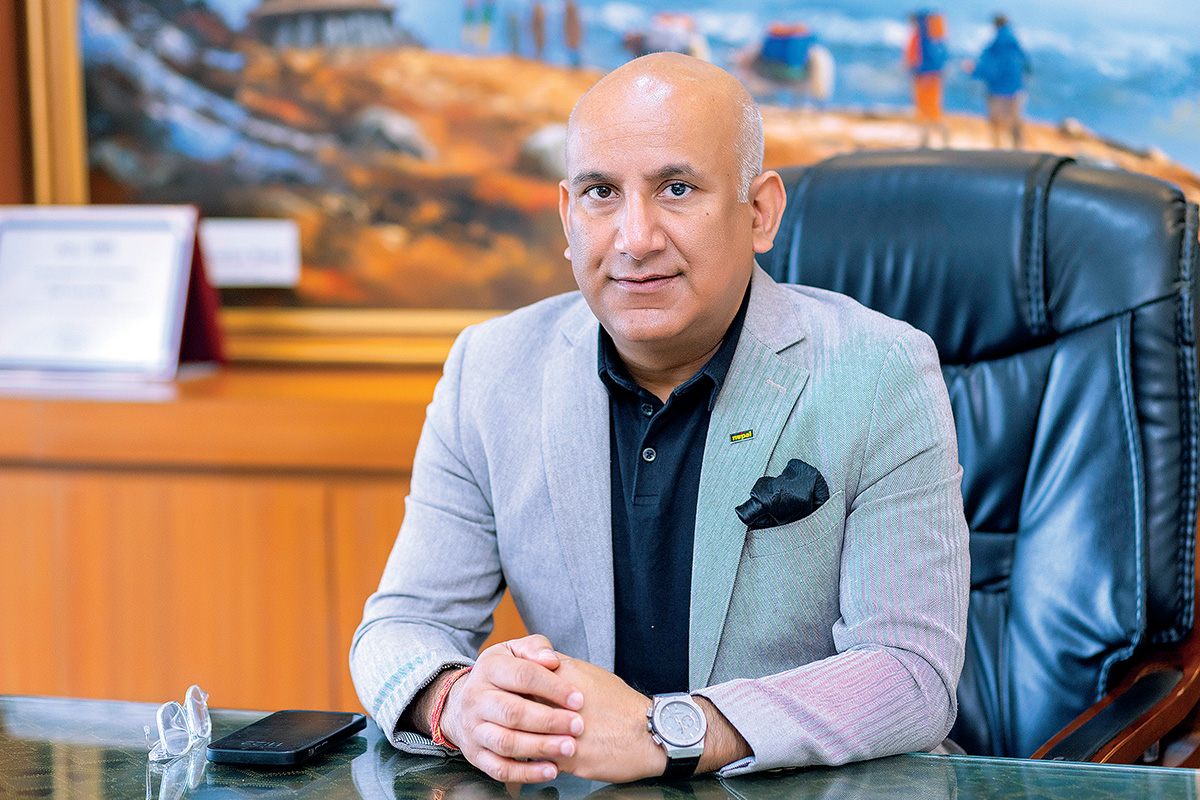
Deepak Raj Joshi
CEO, Nepal Tourism Board
“BEFORE THE PROTEST, NEPAL WAS WELCOMING ABOUT 3,200 INTERNATIONAL VISITORS DAILY. DURING THE UNREST, THIS NUMBER DROPPED BY AROUND 40%. BUT IN THE LAST FEW DAYS, ARRIVALS HAVE STARTED TO PICK UP AGAIN WHICH GIVES US CAUTIOUS OPTIMISM”
The recent Gen Z–led protests has disrupted daily life across the country, sparking concerns about the impact on tourism, one of Nepal’s most vital industries. Images of burning vehicles and clashes, violence and death has raised alarm among international travellers and travel operators alike with more than eight countries issuing travel advisories.
For a sector that contributes significantly to the economy and provides livelihoods to hundreds of thousands, even a temporary disruption can have far-reaching consequences. Tourism in Nepal is not just about hotels and airlines; it is also about the countless small and medium enterprises and individuals within the value chain.
With even star hotels being targeted for arson and looting, there is a deep sense of unease that makes it difficult for the country’s apex tourism body to address. Business 360 spoke to Deepak Raj Joshi, Chief Executive Officer of Nepal Tourism Board on what is being done to restore confidence among both domestic stakeholders and international visitors, while reinstating Nepal’s reputation as a safe destination. Excerpts:
What is the estimated scale of damage to tourism infrastructure across the country due to the recent Gen Z protests?
The scale of damage has been varied. In total, about 20 hotels across Nepal were directly affected. Out of these, three to four properties suffered extensive structural harm that will keep them closed for at least six months to a year. These include larger hotels in key tourist hubs that need major renovation before they can welcome guests again. On the other hand, many hotels experienced partial damage like broken windows, vandalised lobbies, minor fire-related issues which have already been addressed. These properties are operational again, ensuring that Nepal still has the capacity to host international and domestic visitors.
What is important to highlight is that no cultural heritage sites, monuments or major tourist attractions were damaged. Sites like Pashupatinath, Boudhanath, Swayambhunath, Lumbini and the trekking regions in the Himalayas remain intact. This fact alone makes Nepal’s situation different from other crisis-hit destinations where iconic landmarks often take the biggest hit. For travellers, this means that the heart of Nepal’s tourism product, its heritage and natural beauty, is untouched.
The human cost, however, is real. With some hotels closed, between 2,000 to 2,500 workers are currently jobless, at least temporarily. That includes not only hotel staff but also people in connected services like transport, guiding and food supply. Tourism is one of Nepal’s most labor-intensive industries and even small fluctuations in visitor arrivals have a broad impact. For many families, a week without tourist income means immediate hardship.
Before the protest, Nepal was welcoming about 3,200 international visitors daily. During the unrest, this number dropped by around 40%. But in the last few days, arrivals have started to pick up again which gives us cautious optimism.
How much financial loss has the tourism sector suffered so far in terms of cancellations and revenue decline?
The losses are heavy when you combine physical damages with the drop in arrivals. Hotel Association Nepal’s preliminary assessment puts physical damage at around 25% of properties though most of this is not catastrophic. The larger hit is economic. With international arrivals down by 40% at the height of the protests, the industry lost a significant chunk of its seasonal revenue.
To put it in numbers, each tourist spends roughly $60–$65 per day in Nepal. If you multiply that by thousands of visitors who either cancelled or postponed trips, the daily loss runs into hundreds of thousands of dollars. Over weeks and months, this adds up to millions. While cancellations did occur, what we are noticing more is hesitation. Many travellers are not outright cancelling but instead delaying their bookings until they are sure of the situation. That hesitation affects airlines, hotels, trekking agencies and countless small businesses.
The positive side is that Nepal has a loyal base of repeat visitors. Many of them know from experience that Nepal is resilient and that crises here tend to pass quickly without targeting tourists. These visitors are simply waiting for reassurance and that is where our communication strategy plays a vital role.
What portion of the damage can be covered by insurance, and how much will fall on businesses or the government?
Most hotels and tourism properties are insured against damage and those claims are already being processed. Insurance will cover physical repairs but it cannot restore confidence. Loss of confidence among visitors and international partners is harder to quantify and much harder to insure. This is why our bigger challenge is reputational. Even when hotels are fixed, it takes sustained effort to bring tourists back. That is where both the government and Nepal Tourism Board must step in with relief measures, incentives and aggressive communication campaigns.

Is the government or NTB planning a relief or recovery package specifically for tourism businesses?
Multiple steps are being taken. During the protests, we worked to ensure tourists were safe and mobile, even under curfew. Airport-to-hotel shuttle buses were arranged and visitors were often assisted by protesters themselves which was unusual but reassuring. These images went viral and helped counter the negative news cycle.
For the recovery phase, we are preparing a strategic plan in collaboration with international agencies and domestic stakeholders. Nepal has faced crises before like political turmoil, natural disasters and the pandemic, and each time we have bounced back. Relief measures could include financial incentives, concessional loans and targeted support for affected businesses. Beyond financial help, the focus is on messaging: showing the world that Nepal is safe, welcoming and ready.
How will Nepal Tourism Board address the reputational damage caused by images of protests and destruction?
We are addressing this through a multi-layered communication strategy. First, Nepal is participating in major travel fairs, expos and international exhibitions to directly communicate with buyers, operators and travellers. Second, we are heavily invested in social media outreach. Our recent partnership with TikTok is an example of how we are adapting to reach younger audiences who rely on digital platforms for travel decisions.
We are also inviting influencers, journalists and bloggers from key markets to come and see Nepal firsthand. Their authentic experiences carry more weight than official statements. In addition, we have started live-streaming from tourist hotspots – trekking routes, heritage sites and cultural hubs – so that people abroad can see tourists enjoying Nepal in real time. This transparency builds credibility.
One thing that sets Nepal apart is honesty. When conditions are not favourable, we openly say it is not the right time to visit. When things stabilise, we extend a warm welcome. This straightforward approach has built trust over the years and it will help us again now.
What long-term measures are being considered to make Nepal’s tourism sector more resilient?
Nepal has learned from experience. Our crisis coordination cell at NTB has become a model for other countries. This unit works closely with tourist police, local authorities and security agencies to provide 24/7 information and support. In times of crisis, the mechanism activates immediately to safeguard tourists.
Beyond safety, resilience also means better infrastructure and services. Road networks that connect tourist hubs are being prioritised. Digital tools such as online visas and online payment systems are being rolled out. These not only improve convenience but also ensure Nepal is aligned with global travel standards.
Looking ahead, what indicators will NTB use to track recovery and when can we expect tourism to return to pre-protest levels?
Booking data is one of our strongest indicators. During the height of the protests, platforms like Expedia and Booking.com showed cancellations up to 45%. But recent trends show a sharp drop in cancellations and an increase in bookings for October and November, which are our peak seasons. In fact, advance bookings for this year are higher than the same period last year, which suggests a quick rebound.
If conditions remain stable, we expect Nepal to reach pre-protest levels within the current season itself. Festivals are approaching, which traditionally bring more visitors, and that will add momentum.
Finally, as the CEO of Nepal Tourism Board, what message would you like to share with visitors?
To our domestic community, I would say: tourism is not a standalone sector. It requires contributions from transport, agriculture, culture and countless other industries. If we support tourism, we support the economy as a whole. Let us treat it as a priority and nurture it together.
To international travellers, my message is simple: Nepal remains one of the most welcoming destinations in the world. Our culture teaches us to treat guests as gods, and that value is alive in every household and every community. We are transparent about our challenges but we are also confident in our resilience. When we say Nepal is safe and ready, we mean it. So come with confidence and we will welcome you with open hearts.

